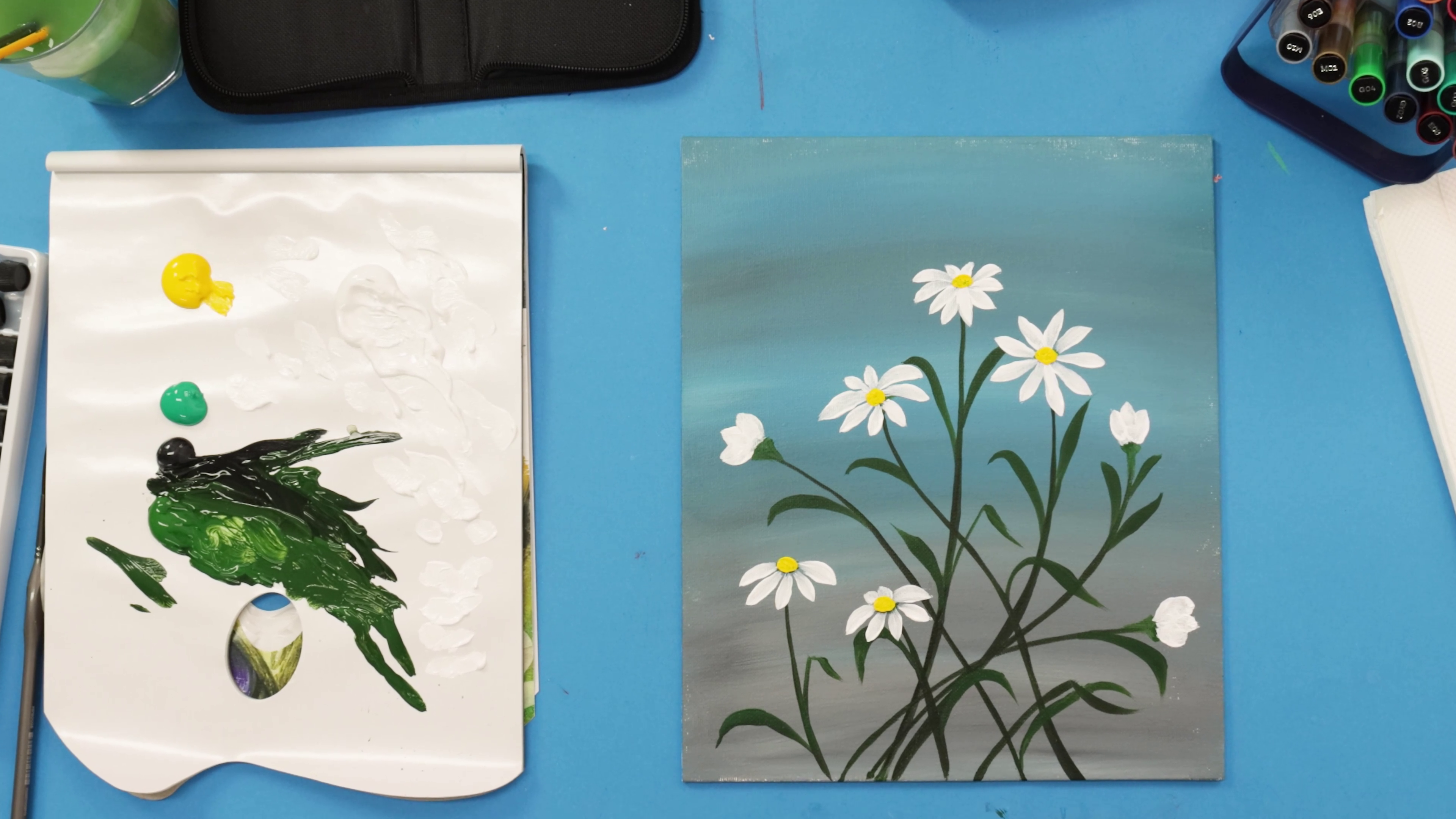Easy DIY fluid art: special effects
Take your fluid art to the next level! In this video we show you how to clean silicone oil off your artwork, use foil paints and varnish your work.
Cleaning the silicone oil off the surface of a painting.
1. Cornflour
Silicone oil is great for creating cells in pour paintings but once the painting has dried some of the residue will remain sitting on the surface. If you intend to add additional areas of paint or apply a varnish then this residual silicone oil needs to be removed.
The first step to do this is to liberally sprinkle some cornflour over the surface of the painting. Use a clean stiff bristle brush like an oil painting brush and scrub the cornflour into the surface of the painting. Create small circular movements with the brush. The cornflour will act like a sponge and soak up the oil.
Next use a dust pan and brush and remove the cornflour.
Final clean.
Once the majority of the cornflour and silicone oil have been removed fill a bowl with warm water and squeeze in some dish washing liquid and use a sponge to clean the surface. Feel the surface of the painting and if you feel that some silicone still remains, repeat the process until no oil can be felt.
Silver Foil after effects.
1. Applying the foil paint.
Mont Marte Foil Paint is a very heavily pigmented metallic paint. It is used in this case to detail and add interest to a dry previously created pour painting.
The paint is best applied with a rigger or a liner brush. These brushes have longer bristles and will hold more paint allowing for a longer and smoother paint application.
The paint is applied in thin passages into areas where differing colours meet or into any interesting paint formations that you might like to highlight.
Gold Foil and Iridescent Varnish after effects.
1. Applying the gold paint.
Mont Marte Foil Paint is a very heavily pigmented metallic paint. It is used in this case to detail and add interest to a dry previously created pour painting. The paint is best applied with a rigger or a liner brush. These brushes have longer bristles and will hold more paint allowing for a longer and smoother paint application. The paint is applied in thin passages into areas where differing colours meet or into any interesting paint formations that you might like to highlight.
2. Applying the Iridescent varnish.
If you are varnishing over anything it needs to be fully cured.
Varnish should be applied with a soft brush preferably of a larger size. I used a 75mm wide artist taklon brush.
Squeeze some Iridescent Varnish out onto a disposable plate. Dip the brush into the varnish and lay a stroke across the top of the canvas. Lay another stroke beneath the first but overlap it slightly. Continue down the canvas until the canvas is fully covered. Let this dry.
If you want the iridescent effect even stronger you can lay another layer of varnish on.
Material List
- Iridescent Varnish Premium 240ml (8.12oz)
- Gold Foil Paint Premium 20ml (0.68oz)
- Silver Foil Paint Premium 20ml (0.68oz)
- Artist Acrylic Brush Premium Taklon Flat Wide 75mm




































